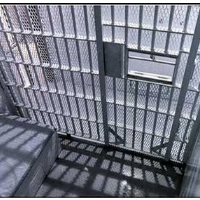Want to Get High? Go to Prison
 (photo: CBS)
(photo: CBS)
Six years ago, an in-house article about drug use in prison by California Department of Corrections and Rehabilitation (CDCR) Communications Chief George Kostyrko noted, “The method of smuggling is nearly always the same. Drug dealing 'shotcaller' inmates conspire to use visitors and Level One inmates that are off grounds doing public service work, to work in concert to bring a steady supply of tobacco, marijuana, heroin and methamphetamine. Contraband is dropped off outside the gates at pre-arranged locations by friends, family or visitors wrapped in small bindles. It is then smuggled in by inmates.”
That knowledge is apparently not enough to stem the flow of illicit drugs into California prisons.
The Associated Press reported last week that drug screening last year showed that at least 23% of prisoners had used illegal substances. The number is considered on the low side because 30% of the inmates refused to take the test despite a promise that a positive result wouldn't be held against them. One quarter of the prison population were targeted for the tests.
Marijuana was the drug of choice, showing up in half the positive tests, followed by morphine (20%), methamphetamine (14%), amphetamines (11%) and cocaine (2%).
The CDCR is preparing a formal proposal to increase drug and alcohol penalties and impose new mandatory testing throughout the system that holds around 120,000 prisoners. A first-time positive test result would cost inmates 90 days' pay, which isn't a lot of money. They only get paid pennies an hour to work. Repeat offenses could cost a prisoner up to a year's pay.
Loss of pay probably isn't going to have a major impact on an individual's ability to buy drugs, since it is estimated that drugs already cost up to five times as much in prison as on the street.
The department acknowledged that there were, on average, more than 10 drug incidents every day last year. That doesn't include the 320 prison visitors and 10 employees who got busted trying to bring drugs in. Another 52 people, who had no good reason to be around a prison, were also arrested for drug smuggling, AP reporter Don Thompson wrote.
Chuck Alexander, a spokesman for the California Correctional Peace Officers Association, told Thompson that it would be tough to crack down on drug trafficking, in part because of innovative ways prisoners have found to get around the system. He described smugglers punting balls filled with drugs over prison fences and the inclusion of drugs in otherwise legal mail or packages.
Modern technology could also be a factor real soon. Guards at Hull jail in Quebec, Canada, told the Ottawa Sun last November that drones drop suspicious packages in the province's prison yards “often.” Stephane Lemaire, president of Quebec's correctional officers' union, said, “Usually the drones are carrying small packages of drugs or other illicit substances.”
The Guardian, a British daily newspaper, reported last month that a man was arrested after a drone was allegedly used to smuggle drugs into a Melbourne, Australia, prison. “At the end of the day if they can throw tennis balls over the wall with drugs in them . . . it’s going to be very difficult to stop these drones,” a spokesman for prison officers said.
A CDCR hearing to consider the new regulations is scheduled for May 27.
–Ken Broder
To Learn More:
California Prisons Find 1 in 4 Inmates Used Drugs (by Don Thompson, Associated Press)
Lancaster Officer Named Antelope Valley Peace Officer of the Year (by George Kostyrko, California Department of Corrections and Rehabilitation)
Drone Used in Attempt to Smuggle Drugs into Melbourne Prison, Say Police (by Nick Evershed, The Guardian)
Drone Sets Off Security Alert at Hull Jail 10 (by Michael Aubry, Ottawa Sun)
- Top Stories
- Controversies
- Where is the Money Going?
- California and the Nation
- Appointments and Resignations
- Unusual News
- Latest News
- California Forbids U.S. Immigration Agents from Pretending to be Police
- California Lawmakers Urged to Strip “Self-Dealing” Tax Board of Its Duties
- Big Oil’s Grip on California
- Santa Cruz Police See Homeland Security Betrayal in Use of Gang Roundup as Cover for Immigration Raid
- Oil Companies Face Deadline to Stop Polluting California Groundwater





